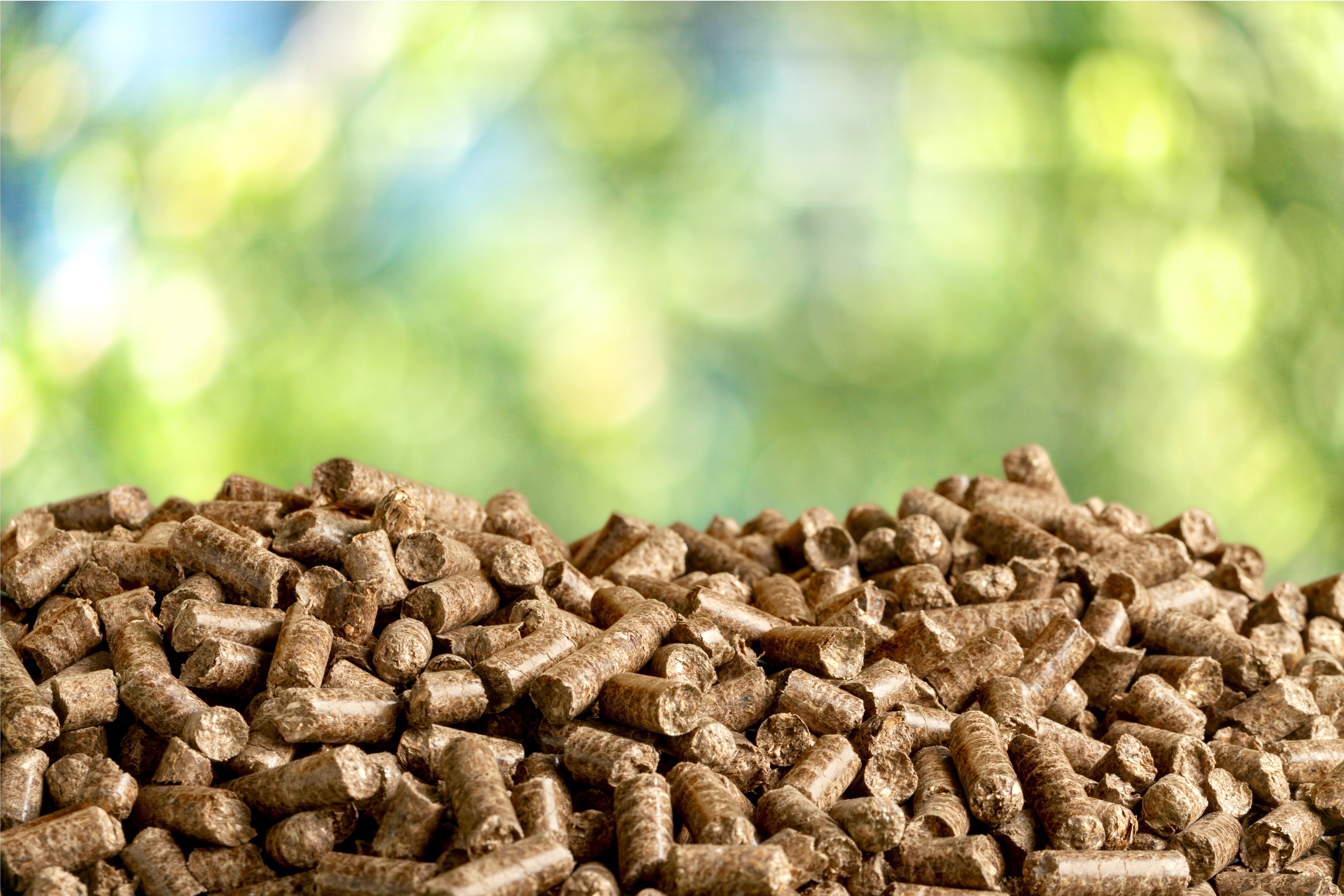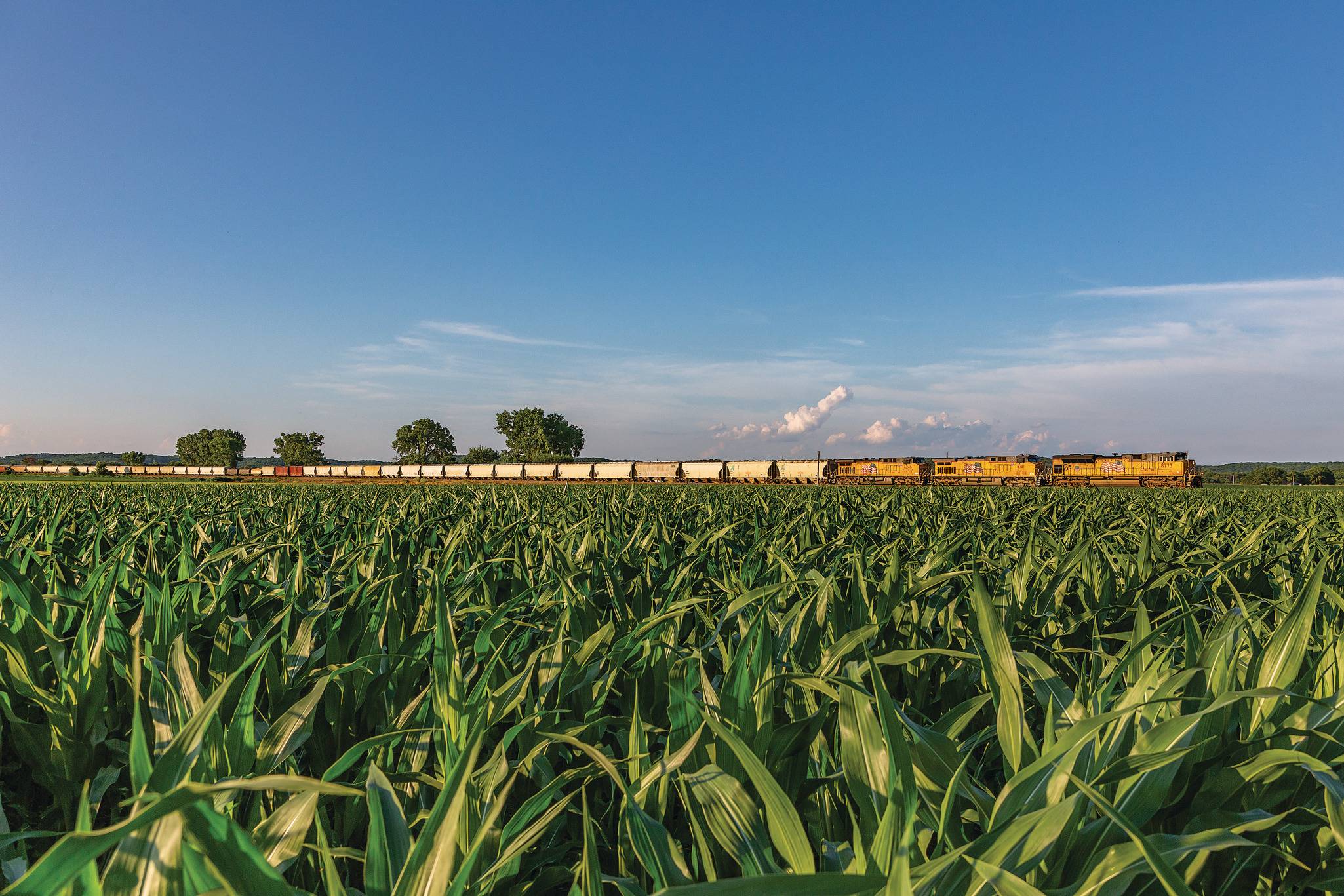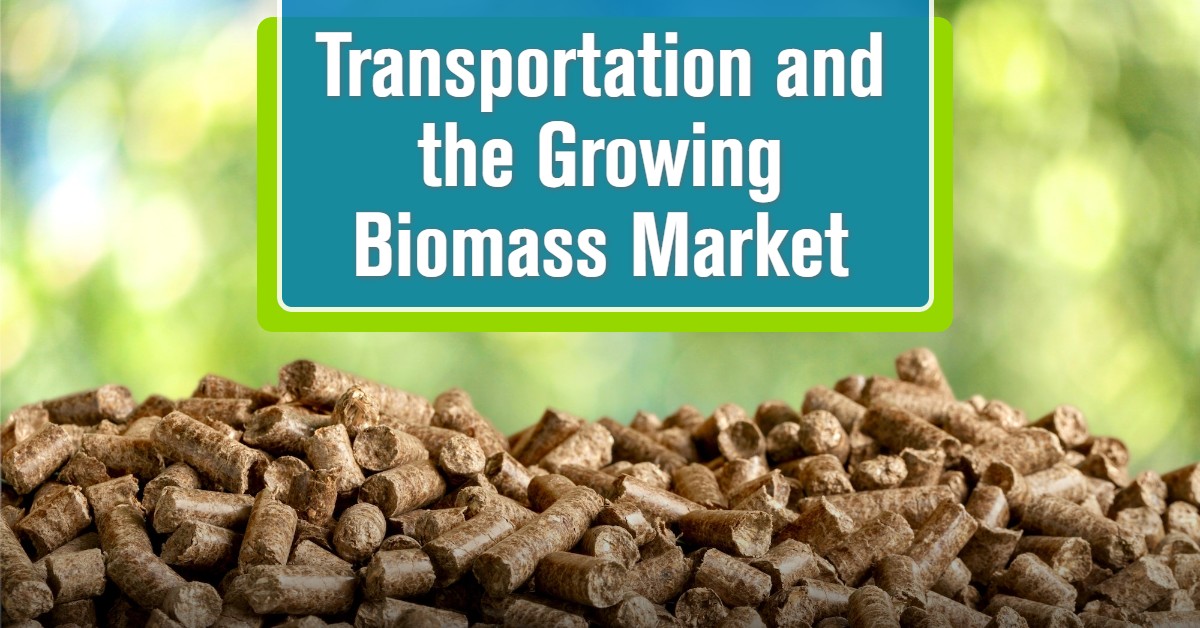According to a recent Pew Research Center survey, 69% of Americans support the United States taking steps to become carbon neutral by 2050, a goal outlined by President Biden in the early part of his presidency. To accomplish this goal, the same share of Americans (69%) indicated they are in favor of the U.S. developing renewable energy sources rather than expanding oil, coal and natural gas production.
While wind and solar energy are typically the most cited renewable energy sources, another one is on the rise: biomass.
In 2021, the United States exported about 8 million tons of wood fuel pellets, one form of biomass, making it a net exporter of the commodity. As governments and companies around the world ramp up efforts to reduce greenhouse gas emissions, the demand for biomass is likely to keep growing. As it does, transportation will play a critical role.
What is Biomass?

Food waste is a form of biomass.
Biomass is organic material that comes from living organisms, including plants and animals. Examples of biomass include:
- Woody biomass: Logs, branches, tree trimming, and sawdust
- Agricultural residues: Corn stalks, wheat straws, rice husks and sugarcane left over after harvest
- Energy crops: Switchgrass, miscanthus and fast-growing trees can be grown specifically for biomass production
- Animal manure: Organic waste from livestock operations
- Food waste: Organic waste from food processing industries, restaurants and households
When biomass is used for energy, these products are referred to as “biomass feedstocks.”
What Is Biomass Used For?
Biomass may seem like a new energy source, but prior to the mid-1800s, wood was the main source of energy in the United States and was used for everything from heating to cooking to lighting.
Toward the end of the 19th century, fossils fuels like coal, petroleum and natural gas became the nation’s primary energy sources and continue to be today.
But biomass is on the rise as a renewable fuel source. It can be used in the making of:
- Bio-oil
- Transportation fuel
- Renewable chemicals
- Bioplastics
- Polymers
- Heat and electricity
Woody biomass is one of the most used biomass feedstocks. It is usually converted into wood pellets, which can then be burned to produce heat and electricity. This form of energy is common in the industrial and transportation sectors and is used to produce electricity for local utilities and heat for residential and commercial buildings.
In addition to combustion, biomass can undergo thermochemical conversion to produce solid, gaseous, and liquid fuels, chemical conversion to produce liquid fuels, and biological conversion to produce liquid and gaseous fuels.
What Type of Biomass Does the U.S. Export?

The United States is the largest producer of woody pellets, a type of solid biomass.
The United States has been an annual net exporter of fuel ethanol since 2010. Ethanol is a liquid fuel made from corn, so in this regard the United States has been exporting biomass for more than a decade. In 2021, the U.S. exported 1.3 billion gallons (29.8 million barrels) of fuel ethanol to at least 87 countries.
In recent years, the demand for woody biomass as a renewable energy source has risen significantly, particularly in Europe and Asia. This form of biofuel is typically produced from wood processing residues, lumber and paper mill waste, and forest thinning treatments. While many countries have implemented policies and incentives to promote the use of biomass for energy production, other factors such as government regulations, market prices of alternatives, and environmental and sustainability concerns have placed heavy influence on the scale and growth of global demand for woody biomass.
For these reasons, woody biomass has become an increasingly important U.S. export commodity. In 2021, the U.S. exported about 8 million tons of wood fuel pellets. As of March 2023, the United States' annual densified biomass production capacity was estimated to be 13.02 million tons, or 26% of total wood pellet production worldwide.
Woody biomass has the benefit of being a renewable fuel, but the benefits don’t end there. Most, if not all, is made from materials that would otherwise be considered waste and would be sent to a landfill or left in forests where it poses the danger of fueling wildfires.
Where Is Biomass Produced in the United States?
Biomass is produced in many parts of the United States, with the type of biomass product varying by region.
- East of the Mississippi: According to the U.S. Energy Information Administration, 78 densified biomass fuel manufacturers operate in the United States. Densified biomass includes products like compressed wood pellets, briquettes and logs. Most densified biomass fuel producers are located East of the Mississippi River.
- The Midwest: In the Midwest, agriculture residues and dedicated crops make up 95% of the region’s biomass resources.
- The South and West: Woody biomass is predominant in the southern and western regions of the United States, with the top producers located in California, Oregon and Washington in the west and Arkansas and Louisiana in the south. In addition to existing production, both regions are slated for growth to support the continued demand for woody biomass.
Where Does the U.S. Ship Biomass Exports?
The United States is the largest exporter of wood pellets in the world, with the largest consumers being located in European and Asian countries.
- Shipping biomass to Europe: The European Union is the largest consumer of biomass. Biomass now accounts for nearly 60% of Europe’s renewable energy, with 70% of that bioenergy coming from woody biomass. More specifically, Germany, Sweden, Austria, and Denmark are major drivers of steady market growth for wood pellets. While Europe has a significant biomass trade, it is a net importer. In 2020, the United States exported 7.26 million metric tons of wood pellets to the EU and 5.63 million metric tons to the United Kingdom.
- Shipping biomass to Asia: The United States heavily exports woody biomass to Asian countries as well, as demand for bioenergy increases and countries including Japan and South Korea seek to diversify their energy sources and reduce their reliance on fossil fuels. In 2021, these countries imported a combined 6 million metric tons of wood pellets. By 2025, demand for industrial wood pellets in South Korea and Japan is projected to grow by 19%, which equates to nearly 13.4 million metric tons by 2025. Despite these projected increases, Europe is still likely to be the largest consumer — that is, at least until European subsidies expire starting in 2027.
How to Ship Biomass

Solid biomass ships by rail in covered hoppers.
Biomass can ship by train, truck, barge, ocean carrier or a combination of transportation modes. When shipping over land, railroads tend to offer a lower cost per ton mile, can handle large volumes, and are the most environmentally responsible transportation mode. Exporting biomass requires more than one shipping mode. Oftentimes railroads will ship these products to ports where they are loaded onto ocean carriers for transport overseas.
- How to ship solid biomass by rail: Solid biomass ships in covered hoppers, which protect the product from moisture. This is important because, in the case of woody biomass, the product must be dry to be used in the combustion process.
- How to ship liquid and gaseous biomass fuel by train: Biomass fuel, including ethanol, ships by rail in tank cars. These rail cars provide safe transportation of liquid biomass fuels like ethanol, biodiesel and renewable diesel.
Tip: Learn more about how to ship renewable diesel and biodiesel.
Biomass Is Good for the Planet — So Shipping it Should Be, Too
As countries around the world look to biomass as a means of achieving their carbon neutral goals, the market will grow (quite literally) to meet the demand — but only with reliable transportation. While transportation supports the global use of biomass, shippers should be conscious of which shipping mode they use, specifically when shipping by land, because the carbon emissions between trucks and trains are dramatically different.
Trains are 3 to 4 times more fuel efficient than trucks, which translates to a 75% decrease in greenhouse gas emissions for products that ship by rail instead of trucks.
Here’s what that could look like: If 25% of the truck traffic moving at least 750 miles traveled by rail instead, annual greenhouse gas emissions would fall by approximately 13.1 million tons; if 50% of the truck traffic moving at least 750 miles went by rail instead, greenhouse gas emissions would fall by approximately 26.2 million tons.
The transportation mode you choose makes a difference, no matter what you’re shipping.
Learn More

Liquid and gaseous biomass ships by rail in tank cars.
To learn how you can reduce your carbon footprint by shipping your freight by trains instead of trucks, check out our carbon emissions calculator. If you’re ready to learn more about shipping biomass or other products by rail, answer a few questions and an expert will be in touch.
Related Articles
- How to Use Carbon Calculators to Reduce Transportation Emissions
- Can Biofuel Power a Locomotive Fleet to Reduce GHG Emissions?
- Rail: An Environmentally Responsible Way to Ship
- The Circular Economy of Sulfuric Acid
- What Can You Ship by Rail?
- Quiz: Is Rail the Right Fit for Your Shipments?
- Rail 101 FAQs
- Pros & Cons of Freight Shipping Modes: Truck, Rail, Water & Air Compared









